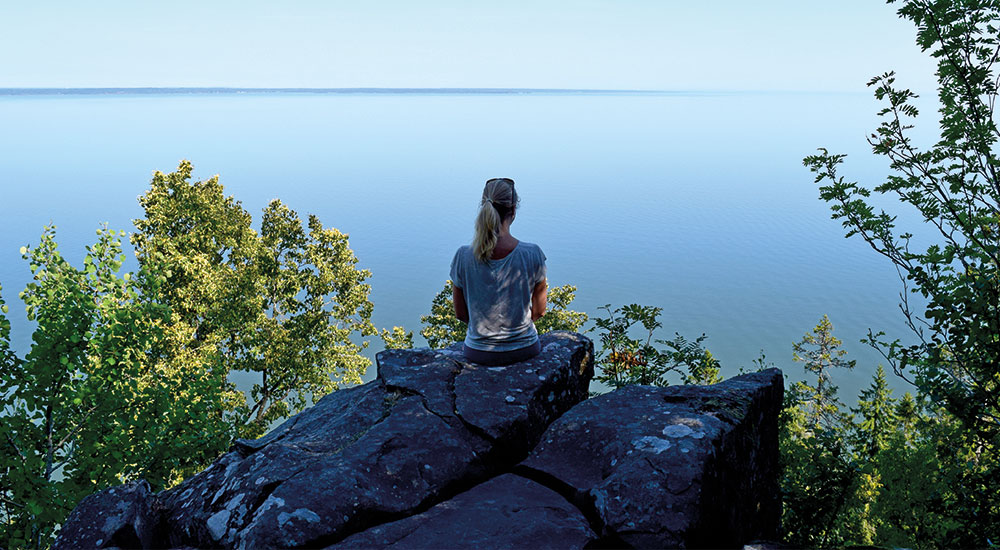
On Halleberg and Hunneberg the doleritelayer is around 60 metres thick, and it protects the soft, underlying rocks of sandstone and alum shale. Doleriteis an igneous rock, which means that it was created from magma from beneath the Earth’s crust. Around 300 million years, magma forced its way up through cracks in the surrounding layers of rock and spread horizontally between layers of sedimentat shallower levels.
When the hot magma cooled and solidified, the doleritecracked in many places, sometimes forming hexagonal columns. This gave rise to the pillars, clefts, hollows and “caves” that can be seen along the sides of the mountains today.
On northern Halleberg, there is a crack in the dolerite that widened over time into a valley. This divides the most northerly part of Halleberg – Hallesnipen – from the southern part, and is known as Ovandalen. The nutrient-rich moraine soil has led to a very diverse herbaceous flora and broadleaf woodland. Hallesnipen is a nature reserve that is mostly covered by pine woodland. At the far end of Hallesnipen there is a fantastic view from one of the doleritestacks out over Lake Vanern.
NOTE! Please remember to walk carefully near the edge of the mountain. There is a signposted trail to both Ovandalen and Predikstolen.

Ovandalen and Hallesnipen is a part och the nature reserve of Halle- och Hunnebergs platåer


